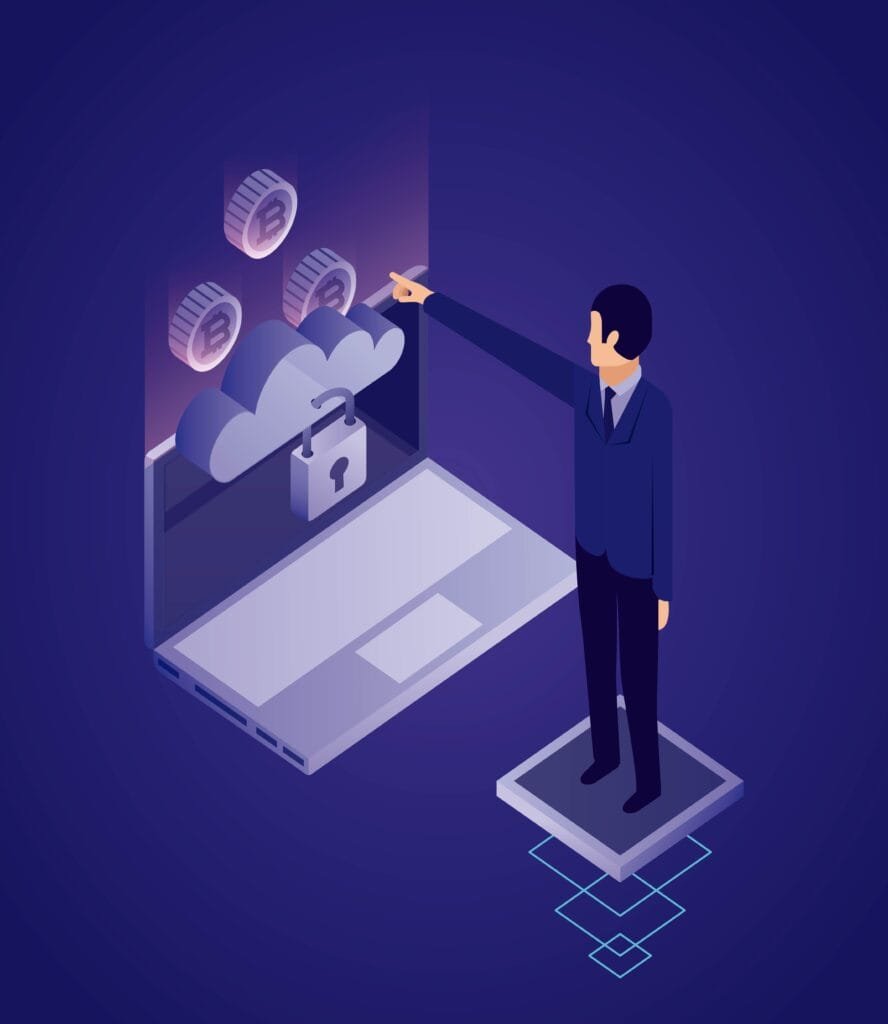Breaking Boundaries: The Evolution of Network Security in the Cloud Era
The development of network security has been nothing short of revolutionary in a linked digital world. When it comes to protecting digital assets, the paradigm has changed significantly from its early phases to the current cloud-driven era. Let’s embark on this transformative adventure together, examining the difficulties, breakthroughs, and prospects for network security.
Introduction to Network Security
The foundation of digital safety is network security, which ensures the availability, confidentiality, and integrity of data and resources. Its importance has grown significantly over time, keeping pace with the increasing speed of technological progress.
Traditional Network Security Challenges
Limitations of Traditional Methods
Conventional network security techniques, which mostly focused on on-premises systems, had significant drawbacks. Their slow response time to the changing threat scenario was one of the main obstacles. The dynamic nature of cyber-attacks frequently makes static security solutions unable to keep up. These previous methods placed a great deal of reliance on perimeter-based defenses, which were insufficient to fend off advanced threats that were able to get past conventional firewalls and intrusion detection systems.
Additionally, because signature-based detection systems could only recognize known threats, they created weaknesses. This made computers vulnerable to zero-day assaults and newly discovered malware strains until security updates were created and implemented, which presented a serious problem.
Vulnerabilities in On-Premises Systems
Despite being widely used, on-premises networks had flaws that hackers were rapidly taking advantage of. Because these systems were centralized, a security breach in one location might potentially jeopardize the network as a whole. Attackers looking to take advantage of vulnerabilities used legacy systems, which were frequently rife with unpatched vulnerabilities because of financial or operational limitations.
Risks Associated with On-Premises Systems
Despite being widely used, on-premises networks had flaws that hackers were rapidly taking advantage of. Because these systems were centralized, a security breach in one location might potentially jeopardize the network as a whole. Attackers looking to take advantage of vulnerabilities used legacy systems, which were frequently rife with unpatched vulnerabilities because of financial or operational limitations.
Furthermore, the flexibility and scalability limitations hindered the adaptability of conventional security solutions. These systems found it difficult to support the wide variety of devices and access points as businesses grew and technology advanced, leading to security blind spots. The increasing complexity of cyberattacks, along with the reluctance to update and patch systems, highlighted the urgent need for a paradigm change in network security methods.
Transition to the Cloud Era

Impact of Cloud Technology on Network Security
Network security went through a transformation with the introduction of cloud computing, which brings with it both benefits and difficulties. Because cloud computing decentralized infrastructure and made scalable, on-demand resources possible, it drastically changed how data is managed, accessed, and stored.
The dynamics of network security were significantly altered by this change. The cloud brought about a paradigm shift in security, whereas older on-premises systems focused security efforts around physical perimeters. As data spread over distant computers, boundaries became less distinct, requiring a redesign of security protocols.
Benefits of Cloud Technology in Security
The benefits of cloud-based security were numerous. Because of the cloud architecture’s inherent flexibility and scalability, resources may be allocated dynamically, allowing organizations to quickly adjust to changing demands. Furthermore, unified security updates and management offered an efficient way to keep security standards up to current in a variety of scenarios.
Because the cloud is spread, there is less danger from localized hardware failures or cyberattacks due to increased redundancy and resilience. By encouraging data redundancy, this distributed architecture ensured continuity and lessened the impact of possible breaches.
Challenges in Cloud-Based Security
But moving to the cloud also brought in a new set of difficulties. Robust encryption techniques were necessary to secure data across distant servers both in transit and at rest. To provide thorough protection, the shared responsibility model—in which users and cloud service providers share security responsibilities—required precise definitions and cooperative efforts.
Furthermore, monitoring and restricting access became difficult in cloud systems due to their dynamic nature. Cloud security now requires controlling user permissions, making sure that configurations are correct, and keeping an eye out for possible misconfigurations.
Because of the constantly changing threat landscape and the quick growth of cloud services, it is critical to provide advanced security solutions that are flexible and adapted to the unique requirements of cloud-based infrastructures.
Enhancements in Cloud-Based Security

Advancements in Cloud Security Measures
The development of cloud-based security solutions has been crucial in strengthening defenses against a threat landscape that is becoming more and more complex. Modern cyber dangers can now be efficiently addressed by security measures thanks to the inherent agility and scalability of cloud platforms.
The incorporation of machine learning (ML) and artificial intelligence (AI) algorithms into security frameworks is one significant development. To recognize and anticipate such dangers, these intelligent systems examine enormous volumes of data and look for patterns and anomalies. Security solutions powered by AI not only expedite threat identification but also facilitate predictive analysis, enabling enterprises to take proactive measures against new threats.
Strengthening Defense Posture
Using extensive visibility and control mechanisms, cloud-based security solutions have also concentrated on strengthening defense postures. Proactively detecting and eliminating risks before they become more serious is possible with advanced threat detection and response capabilities, which are frequently fueled by real-time data.
Holistic Approach to Security
The paradigm for cloud security has changed to one that is more comprehensive. The focus has shifted from only perimeter defenses to zero-trust architectures, identity-centric security models, and micro-segmentation. These complex tactics put a premium on fine-grained control, restrict lateral movement across networks, and ensure that access is only allowed to those who can prove their identity and adhere to the least privilege principle.
Addressing Compliance and Governance
Dealing with regulatory compliance and governance in cloud systems is another noteworthy improvement. Cloud service companies have strengthened their compliance frameworks by following certifications and requirements unique to their business. This reduces the danger to an organization’s reputation and legal standing by ensuring that it can comply with regulatory obligations when using cloud services.
The relationship between technical innovation and adaptable security measures is still crucial as cloud-based security develops. These developments highlight the need for a proactive strategy to protect digital assets in a time of complex cyber threats and shifting technology environments.
Adapting to Evolving Threats

Understanding Modern Cyber Threats
The modern digital environment is full of a constantly changing array of cyber threats, from complex social engineering tactics to highly skilled malware. Developing effective protection methods requires a thorough understanding of these dangers.
Ransomware is a common threat in which malevolent actors encrypt data and demand a fee to unlock it. This sneaky strategy has affected businesses in a variety of industries, interfering with daily operations and resulting in significant financial losses.
Strategies for Proactive Defense
To combat ever-changing threats, one must be proactive. Threat intelligence platforms, which compile and evaluate threat data to enable proactive threat detection and response, are being used by organizations at an increasing rate.
Proactive defensive measures include regular security assessments and the implementation of strong incident response strategies. “Red team-blue team” simulations, or simulated cyberattack exercises, let businesses test their defenses and proactively find vulnerabilities.
Role of Encryption and Authentication
One of the mainstays of modern security is encryption, especially when it comes to cloud environments. To ensure confidentiality, data is encoded to make it unreadable by unauthorized users.
Furthermore, strong authentication procedures are essential for confirming the legitimacy of users attempting to access private information. By combining many authentication factors, such as passwords, biometrics, or security tokens, multi-factor authentication (MFA) adds a layer of protection and significantly reduces the possibility of unwanted access.
Role of Encryption and Authentication
Importance of Encryption in Cloud Security
A key component of cloud security is encryption, which protects private information from illegal access or interception. Encryption makes sure that data in the cloud, which travels across networks and is stored on distant computers, cannot be decoded by unauthorized parties, even in the unlikely event that it is intercepted.
An extra degree of protection is offered while data is in transit via end-to-end encryption, which encrypts data before sending it and decrypts it after it is received. This process ensures that should data be intercepted, it would remain unintelligible in the absence of the corresponding decryption keys.
Multi-factor authentication (MFA) and its Significance
Since it reduces the vulnerabilities connected to password-based authentication, multi-factor authentication (MFA) has become a reliable authentication technique. MFA greatly improves access control by demanding several kinds of authentication, such as passwords, biometric information, security tokens, or one-time codes.
Because it is harder for bad actors to compromise multiple authentication elements, MFA dramatically lowers the risk of unwanted access. This multi-tiered strategy improves security, especially in cloud situations where access is distributed among various devices and locations.
Implementing Encryption and Authentication in Cloud Environments
Strong encryption tools are provided by cloud service providers, enabling enterprises to secure data while it’s in transit and at rest. In order to prevent unwanted access to sensitive information, they frequently offer encryption key management services, which enable the safe storage and maintenance of encryption keys.
Concurrently, MFA deployment in cloud environments ensures that multiple authentication factors are required for access to important systems and data. By taking a proactive stance, the likelihood of unwanted access is greatly decreased, improving the overall security posture.
Regulatory Compliance in Cloud Security
Compliance Requirements and Standards
Cloud security is closely related to a landscape of industry-specific standards and regulatory compliance. Organizations using cloud services have to abide by strict regulations imposed by various regulatory agencies to preserve sensitive data and keep customers’ trust.
Specific requirements for data protection, confidentiality, and the secure management of sensitive information are outlined in standards like the Payment Card Industry Data Security Standard (PCI DSS), the General Data Protection Regulation (GDPR), and the Health Insurance Portability and Accountability Act (HIPAA). Organizations operating in regulated industries must comply with these requirements to avoid fines and reputational harm.
Ensuring Adherence to Regulations
Cloud service providers are essential in helping businesses to fulfill their compliance requirements. To ensure that their services adhere to many regulatory frameworks, numerous suppliers offer compliance certifications and maintain strict security protocols.
When choosing cloud service providers, businesses need to exercise due diligence by checking the compliance certifications they hold and evaluating how committed they are to security procedures. Service level agreements (SLAs) and contracts should clearly state what the user and provider are responsible for in terms of compliance.
Future Trends in Network Security
Predictions and Emerging Technologies
Network security is developing in an environment that involves rapid technological progress and changing cyber threats. The following new developments have the potential to influence network security in the future:
- Convergence of AI and Security
It is anticipated that machine learning (ML) and artificial intelligence (AI) integration into security systems will advance. Defenses will remain strengthened by AI-driven threat detection, behavioral analytics, and automated reaction mechanisms, which allow for the early discovery and reduction of cyber threats.
- Quantum Computing and Encryption
The emergence of quantum computing presents opportunities as well as obstacles for encryption. Although conventional encryption techniques are threatened by quantum computing, quantum-resistant cryptographic solutions are also made possible by this technology. To secure data in the post-quantum era, quantum-safe encryption methods must be developed.
- Zero Trust Architecture
The zero-trust approach will become more popular. It requires strict verification for all users and devices and assumes that there is no inherent trust within a network. This strategy, which places a strong emphasis on least privilege access and continuous verification, attempts to reduce the lateral migration of risks within networks.
- Blockchain for Enhanced Security
The decentralized and unchangeable nature of blockchain technology makes it a promising tool for enhancing security. Its possible uses include transaction security, authentication procedures, and ensuring the accuracy of vital data.
- Increased Focus on Human-Centric Security
There will be a greater focus on human-centric security measures due to the recognition of the human aspect as a critical component of security. Improved user education, insider threat identification via behavior analytics, and behavior-based adaptive security policies are all part of this.
Conclusion
The development of network security from conventional techniques to the cloud era is indicative of a continuous effort to efficiently protect digital assets. Network security resilience will be determined by proactive measures, following rules, and accepting new trends as technology develops.
FAQs
1. What are the primary challenges faced in transitioning to cloud-based security?
Transitioning to cloud-based security involves challenges such as ensuring data encryption and secure transmission, delineating shared security responsibilities between the provider and user, and adapting to the dynamic nature of cloud environments.
2. How does AI contribute to enhancing network security in the cloud era?
AI augments network security by enabling predictive threat analysis, automating threat detection and response, and providing insights into evolving cyber threats. Its ability to analyze vast amounts of data helps in proactive defense strategies.
3. Why is regulatory compliance crucial in cloud security measures?
Regulatory compliance ensures adherence to specific standards, protecting sensitive data, maintaining trust with customers, and avoiding legal penalties. Compliance frameworks like GDPR, HIPAA, and PCI DSS outline stringent requirements for data protection.
4. What role does encryption play in securing data in the cloud?
Encryption ensures that data remains indecipherable to unauthorized entities, safeguarding it during transmission and storage in the cloud. End-to-end encryption and robust key management are crucial aspects of cloud security.
5. What are some predicted trends shaping the future of network security?
Predicted trends include the convergence of AI and security, quantum-safe encryption in the post-quantum era, the rise of zero-trust architecture, the integration of blockchain for enhanced security, and a focus on human-centric security measures.







